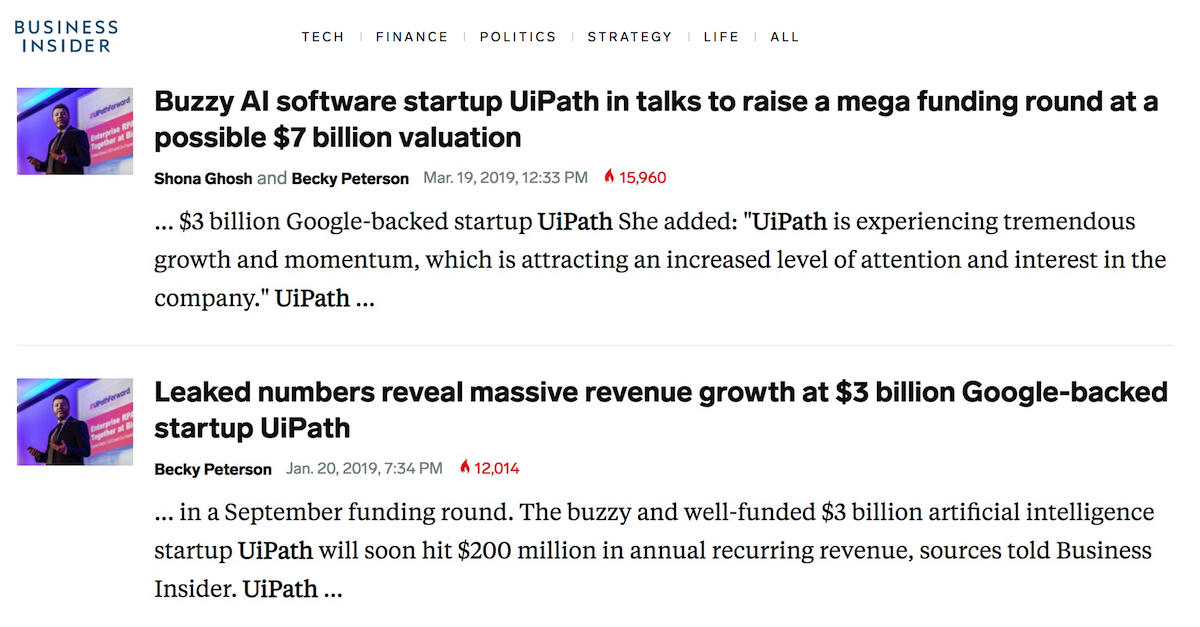Day: May 1, 2019
Why is UiPath obsessed with this “Funding Arms-Race” when it should be focused on scaling its clients?
The robotic transformation software industry has three problems right now: Defining itself; Scaling Bots and being Transformational; Obsessing with this Funding Arms-Race:Read More






